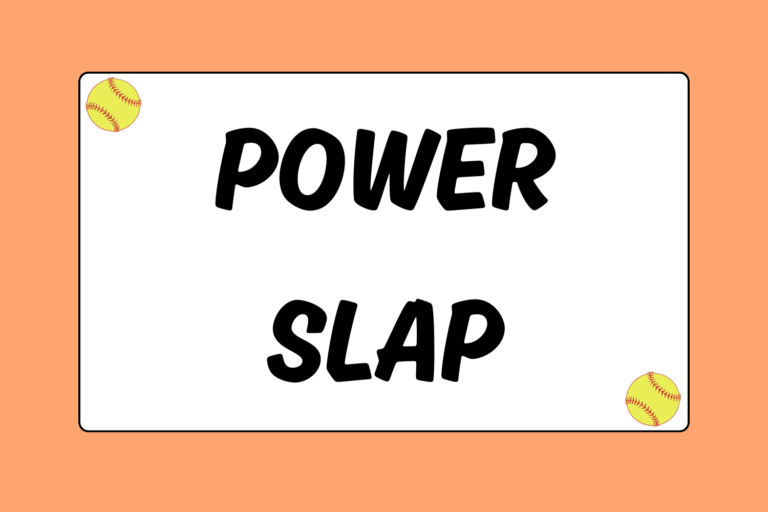Everyone knows what baseball is; unfortunately the same doesn’t go for softball. If you’re a female and you play softball, many people might assume you just play the girls’ version of baseball. But they’re wrong!
George Hancock created softball — known then as “indoor baseball” — in 1887 after modeling its rules and regulations after baseball. However, throughout the years softball has evolved, and today stands as its own recognizable sport.
Pitching
erhaps the most obvious difference between baseball and softball is the pitching technique. Baseball involves overhand throwing from an elevated mound in a pitching circle that extends to a nine-foot radius. Softball, on the other hand, involves underhand pitching from a flat pitching circle that extends to an eight-foot radius.
Another major difference between the pitching is the distance from the mound to home plate. In baseball, the pitching distance is 60 feet and 6 inches whereas in softball, the distance falls anywhere from 35 to 43 feet.
The Bats & Balls
Both sports use bats, but a softball bat and a baseball bat are two completely different pieces of equipment. Neither softball nor baseball bats generally exceed 34 inches in length (baseball bats have a maximum length of 42 inches, though this is a rarity), but their weight differences are vastly different.
In both sports, the difference between the length and weight is referred to as to the drop. If a bat’s length is 34 inches and the bat’s weight is 24 ounces, the bat would be referred to as a “drop-10” bat, or “–10.”
In softball, the maximum drop is 12 ounces, but it may not be heavier than an eight-drop difference. For high school baseball and up, the bats are generally “–3.”
The shapes of the bats are also different. The softball bat is often referred to as a “bottle bat” because of its slender shape. The maximum diameter of a softball bat is 2¼ inches, whereas in baseball, the diameter of the sweet spot on the bat may not exceed 2¾ inches.
Lastly, the balls are much different. Baseballs are a lot smaller and denser than softballs. Baseballs have a nine-inch circumference while softballs have a 12-inch circumference. The color is also well-known to be different. Softballs are generally yellow once they hit the 12-inch circumference (younger players use 10-inch white balls), and baseballs are always white.
The Game
There are a few remaining regulations for softball that differentiate it from baseball. The first are the baselines. In baseball, the standard length between all bases is 90 feet. For softball, this length is only 60 feet. As a result, the shorter base paths make up two different-sized fields.
The home run fence for baseball has a minimum of 250 feet, although today’s stadiums feature fences that sit at least 400 feet away in center field and 325 feet away down the foul lines. In softball, the minimum is 220 feet in centerfield, and teams rarely build much larger fields.
The Innings
The number of innings per game is also different between baseball and softball. Softball games consist of seven innings while baseball games call for nine.
Tie-Breaker
The two sports also differ in how they accommodate tied games. In baseball, if the score is tied after the ninth complete inning, the game will continue until one team takes the lead after a completed inning.
In softball, the approach is similar, but there is an additional element that does not exist in baseball — a runner. If a game is tied at the top of the eighth inning, the offensive team begins its turn at bat with the player who is scheduled to bat ninth in that half-inning (whoever made the last out in the previous inning) placed on second base. This runner can be substituted according to the substitution rules. Every successive inning will begin with a runner on second base until one team wins.
Run Rules
Both softball and baseball have mercy rules. According to NCAA rules, baseball can employ a mercy rule that ends a game if either team leads by 10 runs after seven complete innings of a nine-inning game.
In softball, there is an eight-run rule put into place after five complete innings have been played. In high school baseball and softball, games are called according to the mercy rule if the winning team is ahead by either 10 runs after five complete innings or 15 runs after four.
Lead-offs
This area of the game is also vastly different between both sports. In baseball, a runner is allowed to lead off or attempt to steal any time the ball is live. In softball, the runner is only allowed to leave the bag once the ball is released from the pitcher’s hand; otherwise it is an automatic out.
Professional Ball
When people think of professional ball, most generally only think of Major League Baseball, not National Pro Fastpitch, softball’s professional league. This is expected, though, since the NPF hosts only four professional teams, to MLB’s 30.
Professional Salaries
The average player’s salary for Major League Baseball is 3.27 million dollars per season. The average player’s salary for National Pro Fastpitch is 2,000-5,000 dollars per season.
More often than not, NPF softball players play professional softball as a part-time pastime. Most players have regular jobs and commit their leisure time to professional softball. The average number of years a player will commit to an NPF team is only two, largely for financial reasons.
But if a player can get endorsements and/or coaching jobs, they will generally play longer. Jennie Finch signed a record-high 10,000-dollar annual contract in 2004 with the Chicago Bandits, and with endorsements after the Beijing Olympic Games, Finch was accumulating 400,000 dollars per year due to softball. However, Jennie Finch is a rare phenomenon.
There is a Difference!
There may always be a rivalry between baseball players and softball players bore from the debate as to which pitchers are more difficult to hit. The question is tough to answer because of the difference in distances and reaction times. Ultimately, the sports are similar, but there are very obvious differences beyond just the gender of the players.
Softball has grown far beyond its infant stage as indoor baseball, and today it is played across the world. It may not be as recognizable as baseball, but its popularity is steadily on the rise!





